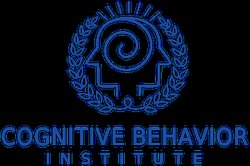It’s no secret that addiction is a major problem facing our country and world. Over the last decade or so, addiction has increasingly become a subject often discussed or alluded to in social media, the news, books, movies, songs, debates, etc. Most recently, opioid addiction has been officially termed an “epidemic,” garnering addiction more attention than ever before. With increasing discussion about addiction there has also been an increasing misunderstanding of what addiction actually is, how it is defined, how it is treated and what it means to be recovering from addiction.
According to the American Society of Addiction Medicine (ASAM), “Addiction is a primary, chronic disease of brain reward characterized by an inability to consistently abstain, impairment in behavioral control, craving, diminished recognition of significant problems with one’s behaviors, interpersonal relationships and a dysfunctional emotional response.”
This is a broad definition and though it provides a context it does not help much in regards to understanding what addiction actually is, how it looks in everyday life. The Diagnostic and Statistical Manual of Mental Disorders, Fifth Edition (DSM-5) lists specific criteria that has to be met within a 12-month period in order for an individual to be diagnosed with a substance use disorder (i.e., addiction):
1. The substance is often taken in larger amounts or over a longer period than was intended.
2. There is persistent desire or unsuccessful efforts to cut down or control the substance use.
3. A great deal of time is spent in activities necessary to obtain the substance, use the substance or recover from its effects.
4. Craving, or a strong desire or urge to use the substance.
5. Recurrent substance use resulting in a failure to fulfill major role obligations at work, school or home.
6. Continued substance use despite having persistent or recurrent social or interpersonal problems caused or exacerbated by the effects of the substance.
7. Important social, occupational, or recreational activities are given up or reduced because of substance use.
8. Recurrent substance use in situations in which it is physically hazardous.
9. Substance use is continued despite knowledge of having a persistent or recurrent physical or psychological problem that is likely to have been caused or exacerbated by the substance.
10. Tolerance
– A need for markedly increased amounts of the substance to achieve intoxication or desired effect.
– A markedly diminished effect with continued use of the same amount of the substance.
11. Withdrawal
The DSM-5 goes to specify, if an individual meets 2-3 of the aforementioned criteria it is considered a “mild” substance use disorder, if an individual meets 4-5 criteria it is considered “moderate” and if an individual meets 6 or more criteria it is said to be a severe substance use disorder.
Not all situations are as cut and dry as the DSM-5 criteria makes it out to be. Often it is most helpful in identifying patterns of dysfunction in behavior, thinking, relationships, self-care, etc. In turn, we use this information to develop recommendations for the most appropriate level of treatment. Treatment levels range from basic early intervention (i.e., one-time DUI/psychoeducation class) to medically managed inpatient hospitalization (i.e., pre-existing medical conditions or medical conditions caused by chronic substance abuse requiring 24hr medical attention along with intensive therapy). Most often, individuals attend an outpatient level of care where they attend a combination of therapy.
Current research indicates that group therapy is the most effective form of treatment for substance use disorder. This can be a standalone treatment but is most effective when combined with individual and family therapy. Research and client report indicate that some of the biggest benefits from group therapy include: reduced isolation, witnessing the recovery of others, being able to relate to others and accountability.
Cognitive Behavior Institute is currently developing our substance abuse treatment program and will launch an outpatient group in February 2020. This group will meet once per week for two hours. This group will utilize various models of therapy including but not limited to Cognitive Behavior Therapy and Dialectical Behavior Therapy. Both of these therapies have been shown to be effective in treating substance use disorders. See more details below.
If you find that you have experienced symptoms like these and want to acquire further information about how treatment may help you, please contact us at Cognitive Behavior Institute at 724-609-5002.
CBI Center for Addiction Outpatient Substance Abuse Treatment Group:
Where:Cranberry Office – 125 Emeryville Dr, Suite 230 16066
When: 6:00pm – 8:00pm on Thursday evenings starting February 13th.
Who: male/female, 18 years or older
*For any questions and enrollment information please call (724)609 5002 or email jonbaillie.cbi@gmail.com

